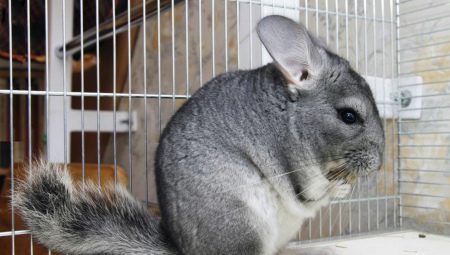In today's world, people are increasingly getting pets. If earlier it could only be dogs and cats, now many people prefer rodents living in cages. Most people believe that these pets are not picky, do not require special attention and high costs of care. However, this is not at all true.
A vivid example is the content of chinchilla - a rodent with unusually soft and rich fur. It is known that they are famous for their cleanliness and measured, mainly nightly, way of life. But this does not mean at all that small pets do not require special attention. Even as required! The cost of their maintenance is quite large. Therefore, before acquiring the animal, it is important to familiarize yourself with some of the nuances.

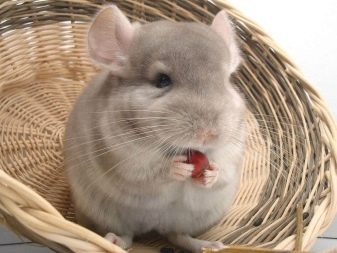
What conditions are needed?
First of all, it is necessary to note the main features of the chinchilla content regarding living in close proximity to a person.
It is important to understand that chinchilla is an exotic animal with a rather fragile physique and not particularly strong nervous system. Therefore, it can not be subjected to any stressful situations, as this can lead to problems with the health of the animal. For this reason, you need to think carefully when buying an animal as a gift to a child under 12 years old.
Of course, it is necessary to take into account the consciousness and level of responsibility of the child, whether he can keep the animal safe and sound.
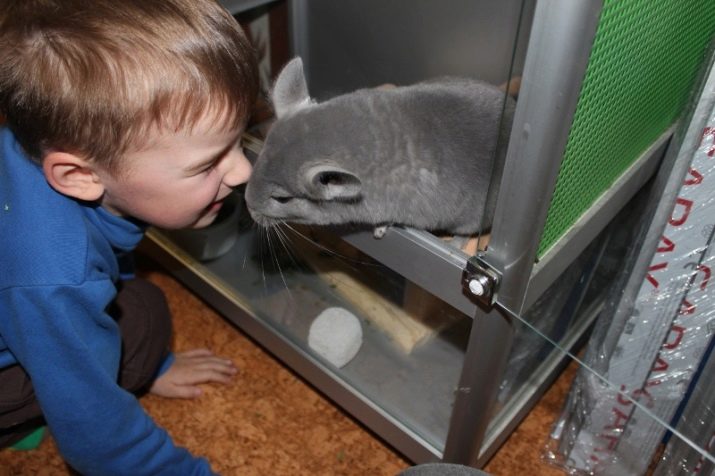
Chinchilla fur is considered safe for people with allergies or asthma.
However, the filler and sand used in the rodent's home can cause a lot of trouble.Small particles of such substances appear in the air, reach the respiratory tract and cause an allergic reaction.
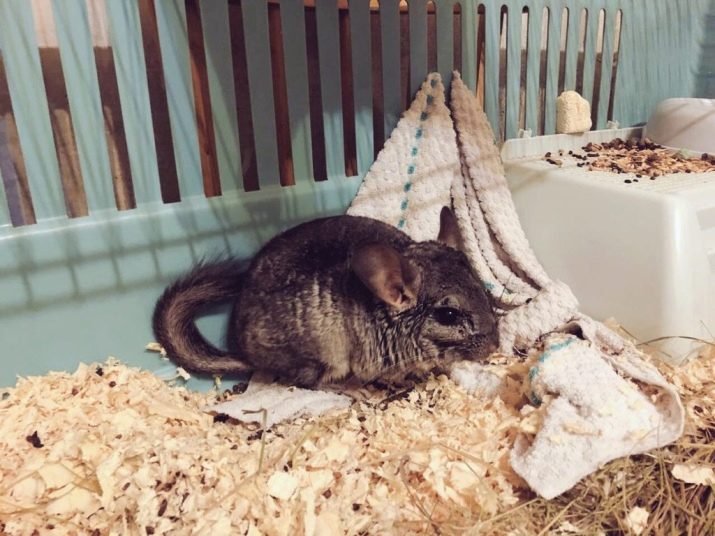
Many people wonder if chinchillas can "walk" around the apartment. Experts do not advise to get involved in such a procedure, because in a human home a shy animal has a huge number of dangers: these are wires with electricity, and poorly resistant furniture, and various containers with liquids. Moreover, fast running is also unsafe for the animal: a chinchilla can get a temperature that can even lead to a stroke. And then, the chinchilla is a rodent, so it’s better to keep all wires and valuable objects away from it. You can definitely not worry about the state of the rodent in the cage, the main thing is to take care of comfort and the availability of entertainment.
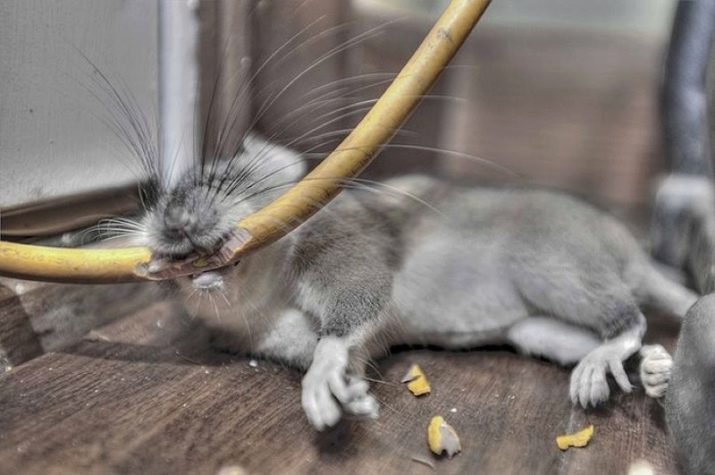
Breeders do not recommend leaving chinchillas alone for more than 1.5 days. Of course, the animal can easily cope without you a little more than a day, it will have enough water and food left. However, it is important to consider the injustice of the animal and possible breakdowns in the cell. It often happens that the rodent breaks the drinker and wet the food, which can be a problem if he is alone at home.
If we talk about cohabitation, then ideal - female and male, in extreme cases, you can settle next to two males of the same litter, but do not forget that same-sex animals get along in one territory quite hard. Animals of this kind always have a lot to do, therefore, living alone, they certainly will not be bored. Breeding chinchillas is a rather complicated matter: you need to have two cages, and within six months after giving birth you need the male and the female to live separately.
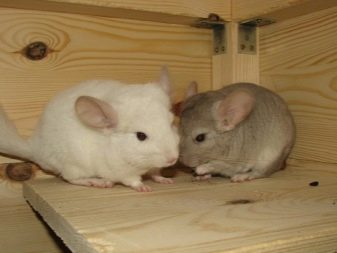
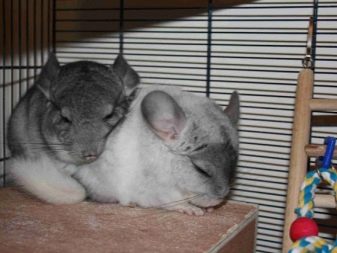
It is also worth considering the fact that veterinarians specializing in the treatment of rodents such as chinchillas are exclusively in large cities. A doctor in a regular hospital may simply not have some knowledge about this species, and even cause injury. It is important to be prepared for the fact that many issues relating to the health of the animal will need to be addressed independently.
When keeping chinchillas in an apartment, it is important to consider the following features:
- the temperature in the room where the rodent resides should be from +14 to +25 degrees, in order to provide the animal with conditions as close to natural as possible;
- the cage should not be in direct sunlight, it must also be protected from drafts, and it is better to avoid the presence of heating devices nearby;
- chinchillas are especially sensitive to loud sounds, so it is undesirable to use noisy equipment in this room.
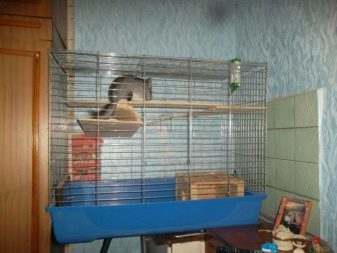
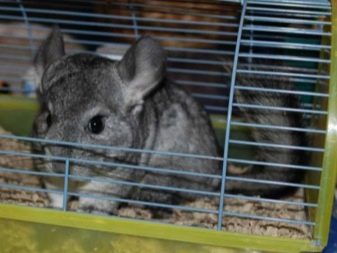
Cell selection
The cage is home to the chinchilla, where she spends almost her entire life. Therefore, it is important to ensure that the home is as comfortable and adapted for the existence of a rodent in the apartment. There are several factors that you need to pay attention to when choosing a design.
- The size. Of course, the cage should be spacious and high so that the animal can move, play and have fun in a way that suits it.
- Bars of reliable material. Chinchilla is a rodent. Therefore, the animal is used to always tasting everything. The bars at the cage will not be an exception, he will definitely try to cut wooden or plastic slats in order to risk escaping to freedom. For this reason, the optimal material for the rods will be metal, which, of course, is beyond the power of pets.
- The gap between the bars. Chinchillas are extremely mobile and flexible animals. They easily crawl into the seemingly narrowest cracks. In order to block rodents' path to freedom undesirable for the owner, it is necessary to choose a cage with a distance between the rods of at least 1.5 centimeters.
- The quality of the material used. This criterion must be given special attention. Make sure that the cell walls are not covered with any paint or varnish.If a chinchilla enters the body, such substances will cause severe irritation, which can lead to poisoning, and even the death of the animal.
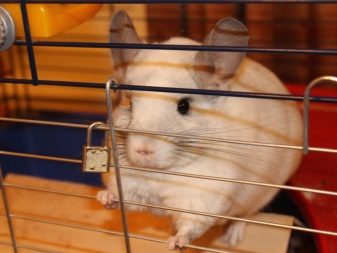
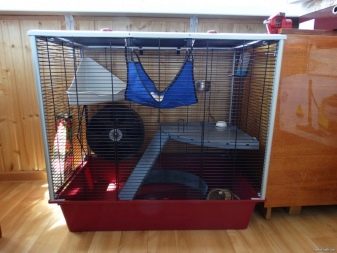
For keeping chinchillas in an apartment, there are two types of cells, each of which has both obvious advantages and visible disadvantages.
Metal
Owners often give preference to just such cells with rods. First of all, they are easy to clean and well ventilated; from them, rodent vital products are easily extracted.
As a disadvantage, we can consider the low level of sound insulation, or rather, its complete absence. As you know, chinchillas are mostly nocturnal, that is, the most active period for them is the dark time of the day when people sleep. In a metal cage, every action of the animal is heard by the owners, sleeping, for example, in the same room. Of course, this causes a lot of inconvenience.
Due to the activity of the chinchilla, they can throw out residues of food or filler “overboard” the cage. Obviously, through the rods all this easily flies to the floor. Therefore, the cleaning area is increasing - you need to take care of cleanliness around the cage.
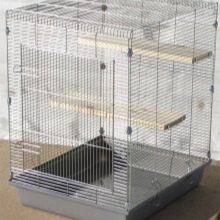
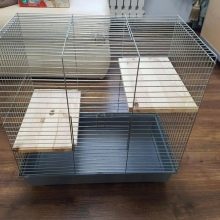
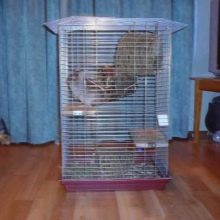
Shop windows
This type of dwelling for chinchillas is a wooden structure, several walls of which are made of metal mesh or glass. Compared with the first option, the showcase clearly wins in the issue of sound insulation - no animals are heard in it at all. Also, feed and filler do not fly outside the frame, as it is made of solid material.
A serious drawback is the fact that the windows are inconvenient to wash, the tree absorbs smells well, and from excessive moisture can swell. In order to comply with sanitary standards, such a dwelling must be periodically changed.
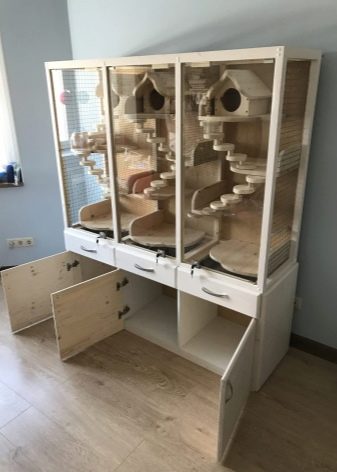

A variety of cells does not affect its components. Inside must be present several shelves suspended at different heights.
A peculiar ladder will be an excellent simulator for rodents and will allow them to jump as much as they like.
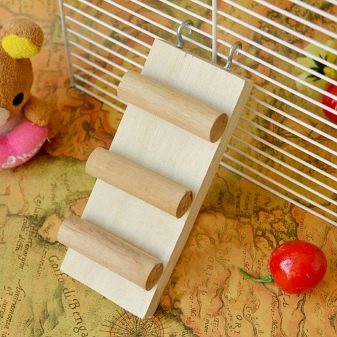
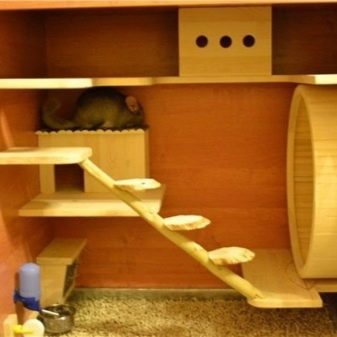
Selection of accessories
Obviously, not only the size of the cage and the materials from which it is made are important, but also the internal content of the home for your furry pet. Consider the basic accessories that are most often preferred by the owners of chinchillas.
- Perhaps, it is necessary to start from the bottom of the cage, which should be as safe and not traumatic as the legs of the animal. You can choose a dense carpet or give preference to shavings or hay. In order for the chinchilla to always be busy, a variety of sports equipment must be present in the cage, which also helps the animal maintain physical fitness and endurance. These are all kinds of stairs, a running wheel, labyrinths, tunnels.
- A separate house, necessary for the privacy of the animal. In it, the chinchilla will be able to stay with itself for a little while, take a break from the eyes that constantly look at it and enjoy loneliness. In the afternoon she will be comfortable sleeping there. The house can be purchased at a pet store or made independently from wood.
- Moreover, to relax your pet, you can equip a zone with a hammock, which he will definitely like. A hammock is purchased at a pet store and suspended from the ceiling or walls of a cage.
- A bathhouse with sand poured into it. It is attached to the walls of the cage, so that due to the active life of the rodent, the mold does not turn over. You can also do it yourself with the help of a plastic bottle cut in half or even a canister. High-quality sand can be bought at the pet store, then sprinkled with a layer of about 0.5 centimeters. So that it is always clean and brings pleasure to the rodent, it is important to change it once every two weeks.
- Drinking bowl. Perhaps this is one of the first items on the list of necessary chinchilla accessories. A drip drinker is ideal. It needs to be suspended 10 centimeters above the floor of the cage. Water should be changed as it becomes soiled and, of course, as soon as it ends.It is best to use bottled or boiled liquid.
- Feeder. You can give preference to the floor, but then it should be made of heavy material so that the animal does not drag it from place to place and does not gnaw. Or choose a hanging feeder, securely attaching it to the cell wall.

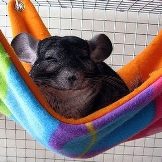
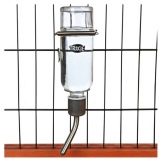
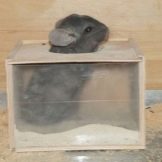
It is necessary to foresee the location of each of the accessories in accordance with the dimensions of the cage. It is important that each item is necessary and useful for the pet, and not just take up space and cause the animal anxiety, being located in an already cramped cage.
Do you need toys?
For an active animal there is nothing worse than constant boredom. Of course, the owners should make sure that the chinchilla has something to do in their cage. Otherwise, the rodent begins to pull out its own fur, which gives him psychological and physical pain.
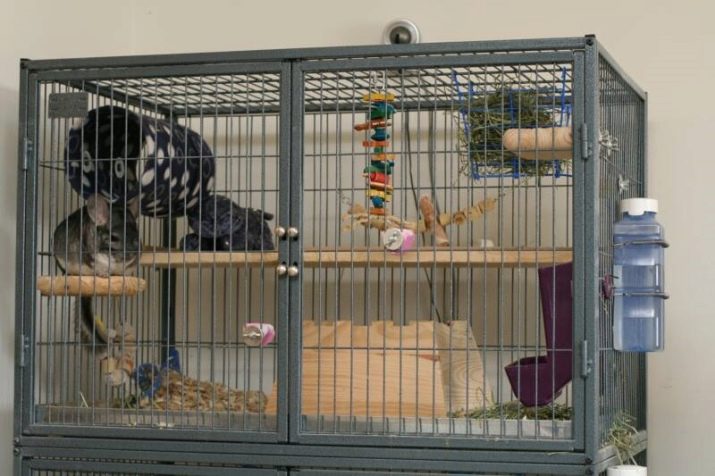
Consider the main types of toys that can attract chinchilla.
- Tunnel. Animals especially like to wade through wooden and plastic pipes, playing hide and seek. In order not to lose a rodent accidentally asleep, as is often the case, you can buy a transparent tunnel. Make sure that the diameter of the device is more than 30 millimeters, otherwise the chinchilla will get stuck.
- Hammock. In pet stores, customers are offered cloth, wooden or plastic structures for resting animals. They can also be with several tiers, which, of course, will be even more interesting for the pet.
- A shelf. A device that attaches to the rods of a cage at a height of about 80 centimeters so that the animal does not suffer from a failed jump. Several installed shelves will provide constant physical activity to active rodents.
- Ladder. Small designs are great for the continuous development of the animal's paws or sharpening teeth. An ideal option with your own hands is a wooden stick placed vertically and leading from the shelf to the bottom of the cage.
- Hanging toys. Most often they are equipped with various noisy details, which cause unprecedented delight in chinchillas. Animals can play with them as they want, but at night, of course, it is better to remove such things from the cage.
- Wheel. A good simulator that helps the pet maintain physical fitness and be constantly busy. It can be made of plastic, wood or metal. The ideal option is an aluminum wheel, however, it has the highest cost in the market for pet products.
- Ball. This design is necessary for walking around the room. The animal crawls in and, fingering its legs, rolls around the room. From the experience of many owners it is known that such entertainment is not always safe for the rodent, as it may not have enough air. Then it is better to remove foreign objects and let the animal walk around the room without any balls.
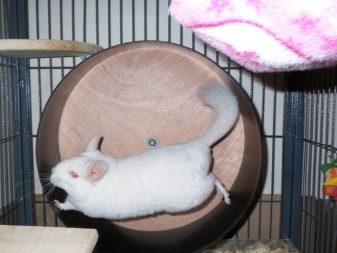
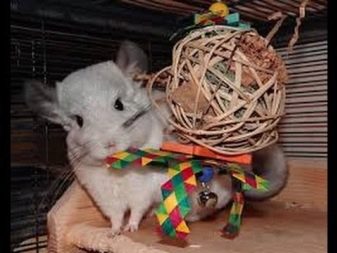
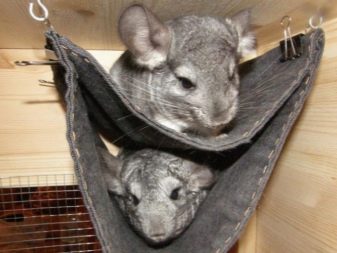

Feeding Features
Food for chinchillas is not only a satisfaction of physiological needs, but also a kind of ritual, getting true pleasure. They love all kinds of goodies for rodents, however, it is important for the owners to know the measure and feed their wards correctly so as not to overdo it with respect to the fragile body of fluffy pets.
A proven and suitable option for everyone is the purchase of ready-made mixtures, which contain all the necessary vitamins and minerals for the successful development of the animal.
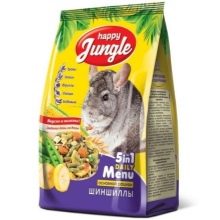


Since the animal is active at night, food intake should also occur in the dark. Chinchilla quickly gets used to the food offered to her, and eventually loses her appetite. Therefore, it is necessary to change the diet once every six months.
Of course, the menu of chinchillas depends on the age, gender, physical condition of the beast, and even on the time of year. It is important to constantly take care of the presence of vitamins, minerals, fatty acids in the food, otherwise the pet will not have enough useful elements, which will lead to various diseases in the beast and pathologies in its cubs.
In a year, one chinchilla requires 10 kilograms of combined feed and 7 kilograms of hay. The daily intake of food for one adult chinchilla is approximately 60 grams. Of these, about 25 grams falls on combined feed and hay, 5 grams on vegetables and herbs, not more than 4 grams on treats, and there should also be 20 milliliters of water.

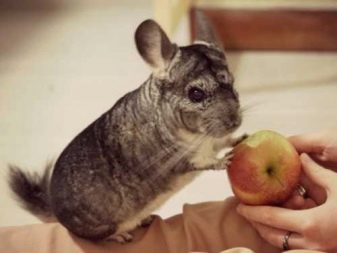
Food must be bought in specialized stores so that all proportions are observed in its composition. Any violations lead to gastrointestinal pathologies. For a more favorable development of chinchilla, it is fashionable to give her additional vitamins from nature. You can pick up hay from legumes and cereals, cornflower, chicory.
Make sure that fern, horsetail, and buttercup do not get into the rodent feeder.
For feeding, you can turn to the help of fresh grass. For example, chinchillas are very fond of freshly picked nettles, dandelion, rhubarb or tree leaves, hawthorn fruits, and even dried fruits. The main thing is to observe the measure.
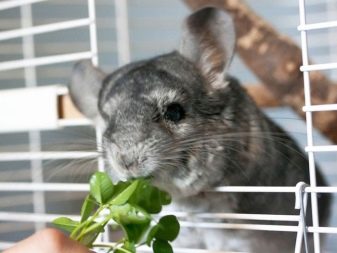
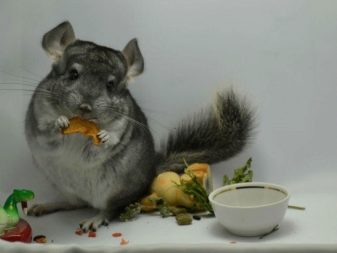
It is forbidden to feed chinchillas with food of animal origin, as they will not be able to digest the protein contained in it. High-calorie nuts are also undesirable. There are also mandatory elements that are constantly necessary for rodents. This is a chalk stone with any vitamin supplements and salt lick.
Bathing rules
Chinchillas are known as one of the cleanest animals. At home, they constantly look after their fur themselves. However, in care they still sometimes need human help, which is easy to do at home.
Once a week, a rodent needs to swim in the sand. As mentioned above, for these purposes, you need a bath specially bought at the pet store or made by yourself, in which you need to pour clean sand.
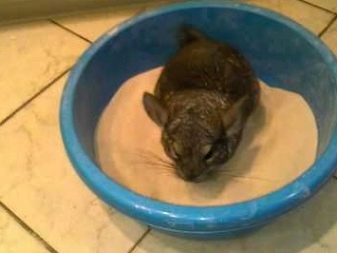
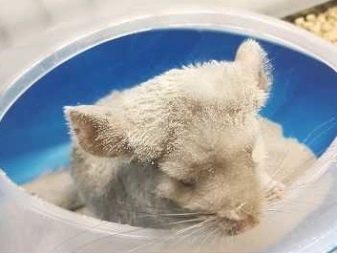
You can also use volcanic dust, it will give the fur a special shine.
Let the animal in the bath, he himself knows what needs to be done. And you can watch the happy creature, which takes incredible pleasure from the sand baths. It is better not to leave the bath for more than 30 minutes, because chinchillas love to fall asleep in the sand, and this dries the skin. It is not necessary to turn to the help of the bath more often than once every five days.
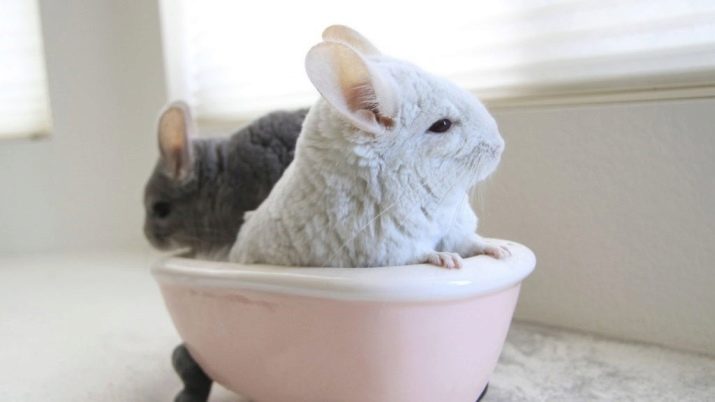
It is strictly forbidden to wet the chinchilla wool, since it takes a lot of time to dry it, and the animal can catch a cold. Moreover, water can get into the ears, and this is a direct path to the inflammatory process, which is very bad for a fragile animal. In case of severe contamination of the fur, breeders advise using a damp towel and a clean comb.
Taming
Chinchillas are the exact opposite of dogs and cats, it is almost impossible to tame them, to teach them to be humble. They love solitude and are ready to spend most of their time alone with themselves. Of course, exceptions happen, and the rodent is ready to go into the hands of the owner, submit to tenderness and affection.
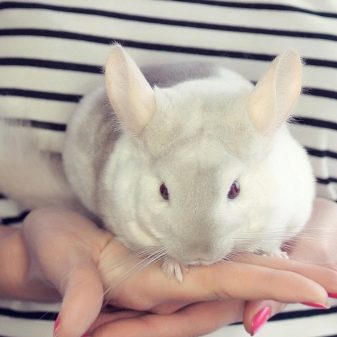
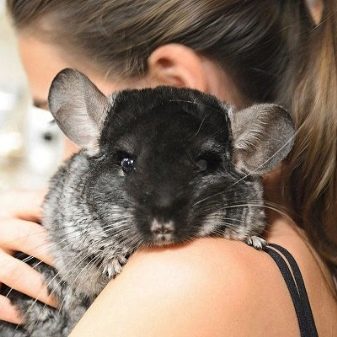
In order for the chinchilla to be more tame and flexible in the future, from childhood it is necessary to take care of its taming. At first - about 3 weeks after acquiring a chinchilla, let her get comfortable in a new place, get used to an unfamiliar environment.
After a certain period of time, you can make contact with a new family member. Begin to approach the cage, open it, stretch your palms towards the animal. Most likely, the chinchilla will be interested in, will sniff, and even bite his fingers. It is good if the pet jumps into your arms, however, it is important here not to scare him. Do not take the chinchilla out of the cage, but, on the contrary, give more time for adaptation.

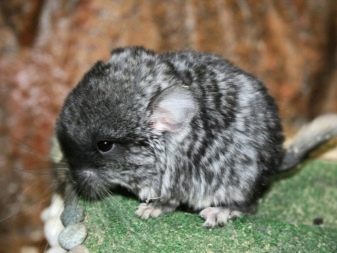
The next time you can try to call a rodent from his home, invite him to his knees or shoulders. At this time, the pet must be affectionately addressed and called by name. Any success must be secured with a treat.
At the next stage of contact with the chinchilla, you can proceed to scratching. The most pleasant places for her are: behind the ear, on the chest or neck.But the back, barrels and ponytail are better not to touch, this can cause a feeling of fear.
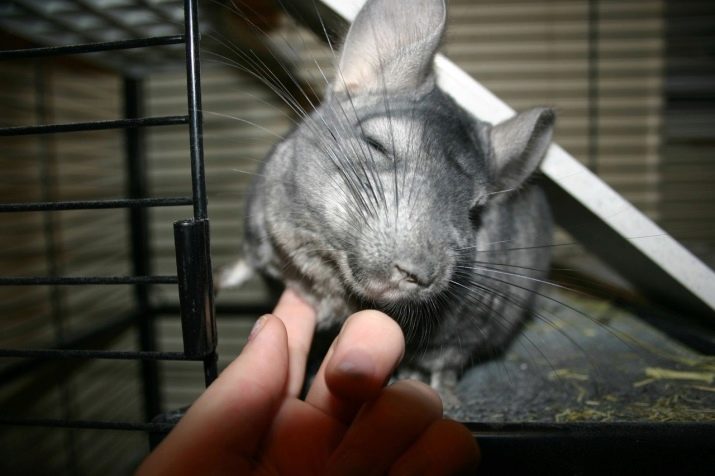
If suddenly during tactile contacts you hear a crack, it is better to leave the animal alone.
Specialists strictly prohibit taking chinchilla by force, it can respond to this with a scratch or bite. This can only be done if necessary: if the animal needs a medical examination. If you often catch her, your hands will seem to her a danger signal, then contact will certainly be lost.
What should not be done?
Based on the feedback from the breeders, it’s worth making a detailed list of what exactly cannot be done with respect to the chinchilla:
- let her out of the cage into a room not free from various dangers;
- let out, there the animal can catch a cold, get some kind of infection, and even run away;
- bathe in the water.
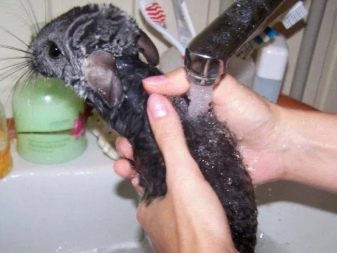
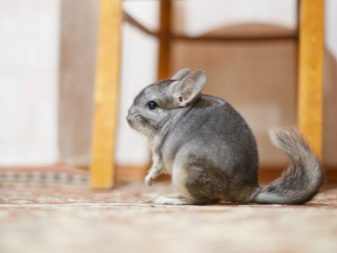
In fact, there are no particular difficulties in the maintenance of the chinchilla. Of course, it is important to take into account many aspects in order for the pet to grow and develop successfully, but it will be very easy for someone who actually loves animals.
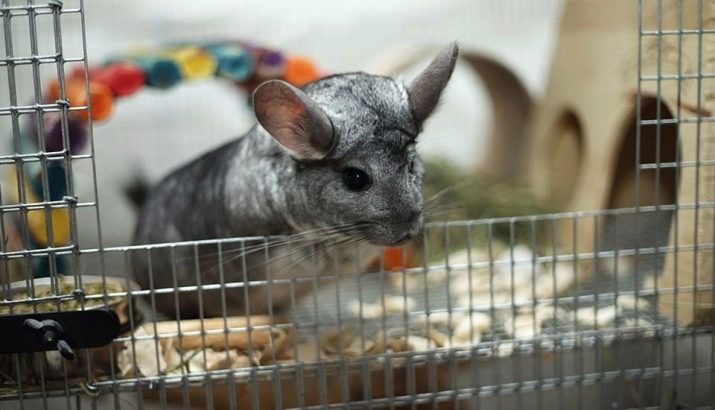
About the features of the maintenance and care of chinchillas, see the next video.
